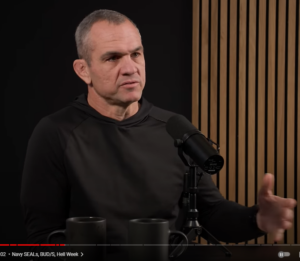Donald Trump’s dietary habits have been a topic of fascination and debate, reflecting a unique blend of traditional preferences and modern fast-food indulgences. Known for his unapologetic love of fast food, Trump’s diet offers insights into his lifestyle and approach to nutrition. This article delves into the specifics of what he eats, the potential health implications, and recent efforts to modify his eating habits.
A Typical Day in Donald Trump’s Diet
Trump’s meal patterns are unconventional, often shaped by his packed schedule and personal preferences. Below is a breakdown of his typical eating habits:
Breakfast
- Rarely consumed; often skipped.
- When eaten, it includes:
- Bacon and eggs (bacon cooked medium, eggs fried over-well).
- Occasionally, cereal or McDonald’s Egg McMuffin.
- Avoids coffee and tea entirely, a notable departure from the norm.
Lunch
- Also frequently skipped, especially during busy days.
- If consumed, a favorite is a meatloaf sandwich, a nostalgic choice from his childhood.
Dinner
- The main meal of the day, often consisting of fast food.
- Reported favorite meal includes:
- Two Big Macs.
- Two Filet-O-Fish sandwiches.
- A small chocolate milkshake.
- Total: ~2,430 calories for this meal alone.
Snacks and Beverages
- Drinks up to 12 cans of Diet Coke daily.
- Snacks include:
- Doritos.
- Oreos.
- Occasionally indulges in fried chicken from KFC or a well-done steak served with ketchup.

Daily Caloric Intake: Exceeding the Norm
Estimating Trump’s daily caloric intake reveals a diet high in calories and low in nutritional balance:
- Dinner alone can exceed 2,400 calories.
- Snacks, beverages, and occasional breakfasts can easily add another 1,000 to 1,500 calories.
- Total estimated daily intake: 3,500–4,000 calories.
- For comparison, the recommended daily intake for a man of Trump’s age and activity level is around 2,000–2,200 calories.
The Fast-Food Factor: Why Trump Loves It
Trump’s preference for fast food stems from practicality and taste. He has publicly praised the consistency and cleanliness of fast-food chains like McDonald’s and KFC. During his presidential campaign, fast food provided a quick and reliable meal option while traveling.
However, this reliance on fast food has drawn criticism from health experts, citing high levels of saturated fats, sodium, and sugars that can contribute to long-term health issues.
Health Concerns and Dietary Adjustments
As Trump ages, concerns about his health have grown. His doctors have noted elevated cholesterol levels and advised dietary changes to mitigate risks of heart disease and other conditions.
Recent efforts include:
- Melania Trump’s Influence: Melania has reportedly encouraged Trump to adopt healthier eating habits, introducing lean proteins and vegetables into his meals.
- Support from RFK Jr.: Robert F. Kennedy Jr. has joined the effort, emphasizing the need for more balanced nutrition.
- White House Chef Suggestions: Former White House chef Andre Rush has suggested replacing fast food with grilled meats, fresh salads, and lower-calorie beverages.
Critiques and Public Perception
Trump’s diet has been both criticized and celebrated. While health experts warn against the risks of excessive fast food consumption, his followers see his diet as relatable and authentically American. His openness about enjoying fast food has endeared him to some supporters who value his unpretentious lifestyle.
Improving for Longevity: A Healthier Approach
To enhance longevity, Donald Trump’s diet could benefit from strategic modifications that align with long-term health goals. Incorporating whole foods such as fresh fruits, vegetables, whole grains, and lean proteins can provide essential nutrients and antioxidants, which are critical for preventing chronic diseases and promoting vitality. Reducing the intake of processed and fast foods high in saturated fats, sodium, and added sugars can significantly lower the risk of heart disease, diabetes, and obesity. Replacing sugary sodas with water or herbal teas and incorporating regular physical activity into his routine could further enhance overall health and energy levels. A gradual shift toward a Mediterranean-style diet—rich in healthy fats like olive oil, nuts, and fish—could help maintain cognitive health and support cardiovascular well-being, fostering a lifestyle conducive to longevity.
Conclusion
Donald Trump’s diet is as unconventional as his persona. While it reflects his preferences and lifestyle choices, it also raises questions about the importance of dietary balance, especially for individuals in high-stress, high-profile roles. Efforts to encourage healthier eating habits highlight the broader conversation about nutrition and its impact on public figures.
Understanding Trump’s diet offers a unique lens through which to view his character, choices, and the cultural values he represents. Whether he embraces these changes or continues his fast-food routine, his eating habits will undoubtedly remain a topic of public interest.





